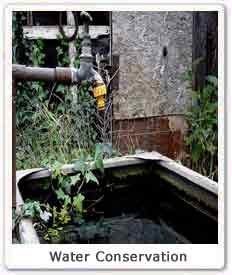Rural Indian women are extensively involved in agricultural activities. However the nature andextent of their involvement differs with the variations in agroproduction systems. The mode of femaleparticipation in agricultural production varies with the landowning status of farm households. Theirroles range from managers to landless labourers. In over all farm production, women’s average contributionis estimated at 55% to 66% of the total labour with percentages, much higher in certain regions.
In the Indian Himalayas a pair of bullocks works 1064 hours, a man 1212 hours and a woman 3485hours in a year on a once hectare farm, a figure that illustrates women’s significant contribution to agricultural production. (Shiva FAO, 1991)
The impact of W.T.O rules and policies of trade liberalization in the agriculture sector on womenis distinctive for four reasons. Firstly, women have been the primary seed keepers, processors. They have been the both experts and producers of food, from seed to the kitchen. W.T.O impacts women’s expertise and productive functions throughout the food chain.
The Trade Related Intellectual Property Rights (TRIPS) agreement impacts women’s knowledge of and control over seed. The Agreement onAgriculture impacts women’s livelihood and income security, and also has secondary impacts in terms of increased violence against women. The sanitary and phyto sanitary agreement has a direct impact on women’s expertise and economic role in agroprocessing.
Secondly, as globalization shifts agriculture to capital intensive, chemical intensive systems, women bear disproportionate cots of both displacement and health hazards.
Thirdly, Women carry the heavier work burden in food production, and because of gender discrimination get lower returns for their work. When WTO destroys rural livelihoods, it is women who loose the most. When WTO rules allow dumping which leads to decline in prices of farm products, it is womens - already low incomes, which go down further.
Fourthly, their position vis-à-vis WTO is also more vulnerable because as the livelihoods and incomes of farmers in general, and women agriculturists in particular are eroded, they are displaced from productive roles, women in agriculture and their status is further devalued, while the patriarchal power of those who control assets and benefit from asset transfer due to globalization is increased,other social processes are triggered which result in increased violence against women.
The violence associated with displacement, devaluation and dis-empowerment takes the form of intensive violence, increasing incidences of rape, the epidemic of female foeticide, and growth in trafficking of women. Women also bear the ultimate burden of farm suicides, since they are left to look after their households without assets but with the burden of indebtedness.
India has a geographical area of 328.73 million hectares; of which reported area for land use is 306.04 million hectares. The net area cultivated is about 142.60 million hectares i.e. about 46.6 per cent of the total reported area. Since nearly 50 million hectares of area is sown more than once,
the cropping intensity works out to 135.1. Forests account for about 68.97 million hectares i.e. 22.5 percent of the total reported land area. Also nearly 13.97 million hectares are cultivable wastelands and 9.91 million hectares are fallow lands. Only about 30 percent of the total cropped area is irrigated and the remaining area is rain fed. The available statistics further shows that only about 66 percent of the gross cropped area is under food crops and nearly 34 percent area under nonfood crops. Cereals and pulses account for nearly 52.93 per cent and 12.64 percent of the total area respectively. Fruits and vegetables occupy nearly 4.24 percent of area.
Plantation crops accounts for insignificant proportion of total area at the macro level, although these are very important crops for certain regions, namely tea in Assam and West Bengal, Coffee in Kerala and Karnataka, Coconut, cashew nut and rubber in Kerala and Tamil Nadu. Of the total coconut area of 1.84 million hectares, Kerala accounts for 51 percent followed by Tamil Nadu 17 percent, Karnataka 18 percent, Andhra Pradesh 5.4 percent and other 9.6 percent. In the case of cashew nut, there are about 601 thousand hectares of which Kerala accounts for 20 percent, Andhra Pradesh 15 percent, Karnataka, Maharashtra and Tamil Nadu 14 percent each, Orissa 11 percent and Goa 8 percent and others 4 percent. Tea covers nearly 4.34 lakh hectares of area in the country of which 3.33 lakh hectares are in the states of Assam and West Bengal. Coffee is predominantly grown in the three southern states of Karnataka, Kerala and Tamil Nadu. Of the total coffee area of about 2.41 lakh hectares, Karnataka shares 1.28 lakh hectares, Kerala 66.5 thousand hectares and Tamil Nadu 32.9 thousand hectares. Similarly rubber is the crop of southern states. Of the total rubber area of 5.59 lakh hectares, Kerala shares 4.73 lakh hectares, Karnataka 19.6 thousand hectares and TamilNadu 18.7 thousand hectares. Also the contribution of plantation crops to foreign exchange earnings is very significant. While tea and coffee earn sizeable foreign exchange, rubber is a valuable import substitute, for rubber-based industries.
According to population census of India 2001, there are about 402.5 million rural workers of which 127.6 million are cultivators and 107.5 million are agricultural labourers .
In other words, pure agricultural workers constitute nearly 58.4 per cent of the total rural workers, of which
31.7 percent are owner cultivators and 26.7 percent are mainly agricultural wage earners (Agriculture Statistics at a Glance, sourced from Registrar General of India, New Delhi 2001). The latest available agricultural census data (Govt. of India, Agricultural Census Division, Ministry of Agriculture 2002) also reveal that about 78 percent of operational holdings in the country are marginal and small, having less than 2 hectares. About 13 percent holdings have 2 to 4 hectares and 7.1 per cent have 4 to 10
hectares of land.









